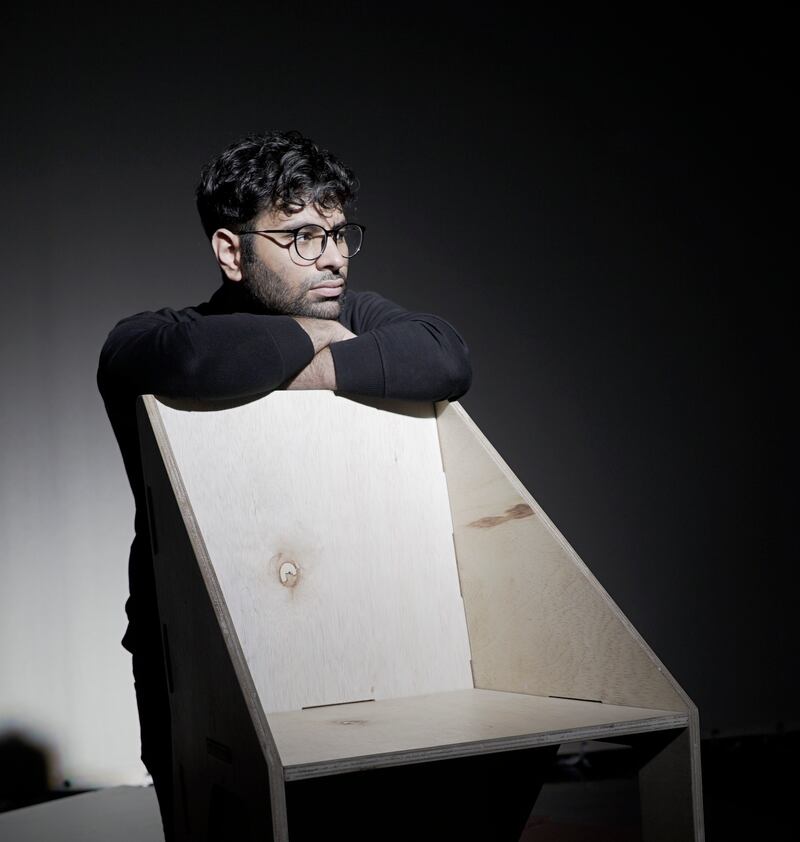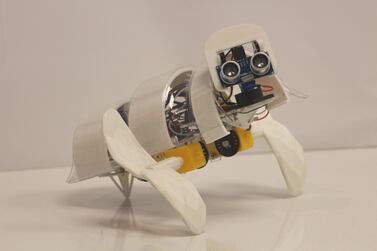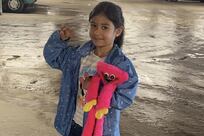You can tell a lot about a society by the way it nurtures the ideas of the next generation. And here in the UAE, we have plenty of reason to be proud – both of youngsters who are constantly pushing boundaries and platforms that showcase their innovations.
With World Education Day falling on Monday, we look at some inventions by students in the UAE over the past year. While many of these are still prototypes, they all have social enterprise and environment as their driving force.
Wastology: a circular smart composting system with an aesthetic design
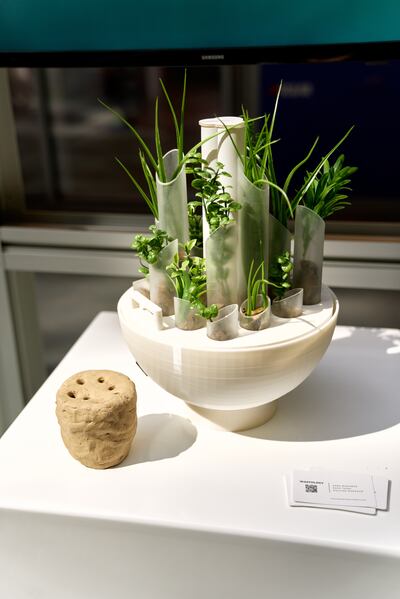
For Dubai Institute of Design and Innovation (Didi) students Sana Mohamed, Kaya Tueni and Dalilah Mansour, it all began with a competition. To be more specific, a competition organised by global energy company Eni to find original ideas to recycle a component of their installation at the Italian Pavilion at Expo 2020 Dubai.
Four teams took part in a four-day workshop with the task of proposing solutions. The three students came up with the winning entry: Wastology, a circular smart composting solution for everyday use.
It’s an intriguingly simple idea. Users put organic waste through a tube where it reaches the centre of the bowl. This centre has a blade, as well as sensors detecting humidity and oxygen levels, and connects it to an app. Based on the sensors, the blade rotates to turn the waste into compost, which can then be removed, filled into the other tubes that are part of the device and used to grow new plants.
Home composting solutions are hardly new: but Wastology differs from others in the market in how circular it is, by allowing new plants to grow within the same design. The aesthetically pleasing model will also make it a popular addition to any room.
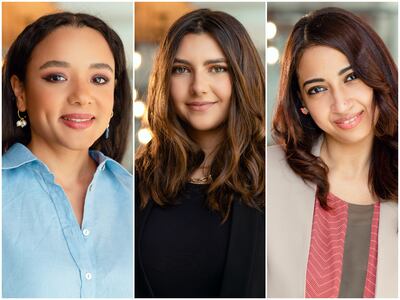
“The inspiration for this design came as a way to tackle food waste in in the UAE and Middle East,” says Mohamed. “Especially during Ramadan, we have big feasts. It’s a part of Arab culture, we are very generous and prepare more food than that’s needed, which gets discarded.”
Users can throw any kind of organic waste that is not animal based – from potato peels to paper. The process of converting the trash to treasure takes about six to eight weeks, during which users can monitor the state of their compost through the app. The product also comes with a booklet on plants, and where it can be kept whether indoors or outdoors, although the founders recommend the kitchen.
“We wanted to make a device that could be used by anyone, even children, as a way to teach them about composting, which a lot of people still don’t know about. And then make a change,” explains Mansour.
In that sense, the aim of the product is not just to reduce food wastage, but also create a shift in mindset.
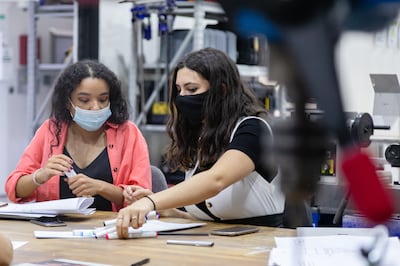
A physical prototype of Wastology was presented at Maker Faire Rome 2021 – The European Edition, in October, and was also showcased at the Italian Pavilion at Expo 2020 Dubai.
However, the three young innovators are still thinking of ways to improve their work.
“Right now, the tubes of this product are made from plastic. But since plastic does not go with our values, we are researching other materials, especially clay, as possible replacements,” says Tueni. “We want this to be accessible to everyone and also create different sizes for different households. We have high hopes that this will be very useful in the future.”
The Anychair: a furniture solution for rural communities
When it comes to new inventions, there is a certain pressure to introduce high-tech products. But it also takes a genius to re-engineer existing products and make them better.
Enter The Anychair, a creation by Cyrus Kheshwalla of Manipal University Dubai. The bachelors in design student, 26, wanted to create a desk chair that could be mass produced, cost effective, easy to transport and assembled without tools.
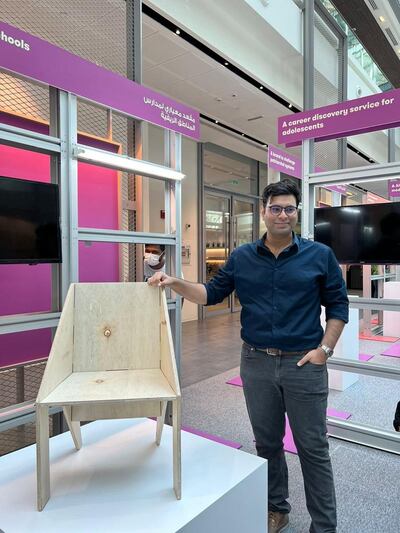
“I’m passionate about social causes and constantly thinking of ways to fill gaps for underprivileged communities. I’m from India and I especially tend to gravitate towards issues in my country. One of them is the state of education in rural India,” he explains.
He noticed that a lot of students in rural schools didn’t have proper furniture, and in some cases, any furniture at all, often sitting on the floor.
“This can lead to bad posture and other health problems in the long run," he says.
So he thought of a design for a chair made by cutting single sheets of wood with CNC machines. The end result, The Anychair, is a product that can be assembled on-site through notches and posts, mass produced, and easily transported.
“It’s not labour intensive. Moreover, since it’s transported flatback, more units can be transported at the same time, making it more cost-effective. We’re looking a cost of a chair being just $5,” he explains.
He credits the ideation of the project to the Global Grad Show, a global programme that highlights projects by students that can positively impact society, saying that it was only when it got accepted that he truly started thinking about the ramifications. In October, a prototype was created and displayed at the event in Dubai Design District, with the ability to hold about 150 kilograms.
The overall goal is not just offering more comfort, but luring more students into schools.
“This enhances the value of education. In rural areas, a lot of children don’t want to go to schools and parents don’t see the point. But we need to make education look like a more lucrative thing. Because the only thing standing between underprivileged communities and progress is education," says Kheshwalla.
While he is still in the process of testing the product’s long-term durability, including how it reacts to moisture or uneven surfaces, and its marketing, the designer is thinking of the next step.
“I already have plans for matching tables and shelving units to go with the chair," he says.
Beyond Bread: A biodegradeable packaging for bread, with bread
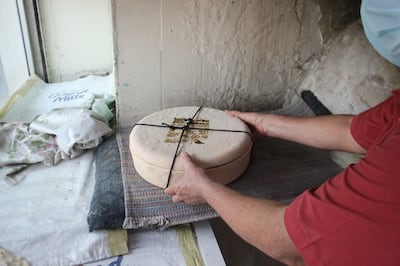
One UAE student has gone above and beyond to create a packaging solution for bread.
Hind Rais, 22, who recently graduated from Zayed University as a graphic designer with a minor in entrepreneurship, decided to combine her passion for baking and graphic design for her final project.
“Usually when you hear about graphic design, it’s all digital. But I wanted to take the next step with the material of the packaging itself, and worked the graphic design aspect into the branding,” she explains.
As a voracious home baker, Rais saw the potential that ingredients for bread had. Which is why she started experimenting with different recipes to create a dead dough: one that doesn’t use yeast, which gives it the ability to last longer.
“I tried the main ingredients – flour, water, salt. But after a few attempts, it would always fail. So my professor suggested contacting experts and one gave me a recipe that included sugar.”
It was a success. Rais started by blending the ingredients and leaving the dough for an hour. She then used a mould to shape it and bake it on very low heat for three hours. “It needs to be done perfectly to ensure the dough doesn't rise and crack,” she explains.
The final product is what she calls Beyond Bread, bowl-shaped package, with a texture close to wood.
“I wanted to create a package that could easily be used to transport bread from local bakeries to homes," says Rais.
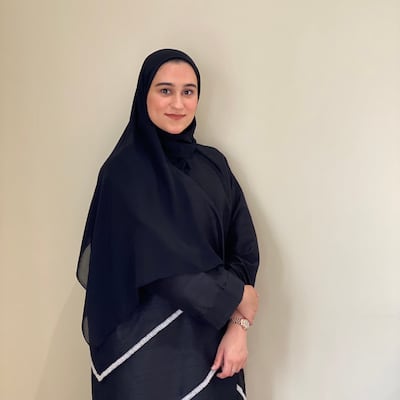
Beyond Bread can easily be reused and can last for months, depending on how it is used and stored. Once it starts developing cracks, it can be ground and fed to birds, creating a sustainable, circular system.
“The world is getting more environment-friendly and, with Expo 2020 Dubai, the UAE is at the forefront,” she says.
While especially created for bread as it “absorbs the heat of freshly baked dough”, Rais is still in the process of figuring out what else it can transport.
“In the future, I have plans to open my own bakery. Perhaps it can be used there,” she says.
HiSign – a board game to teach users American Sign Language
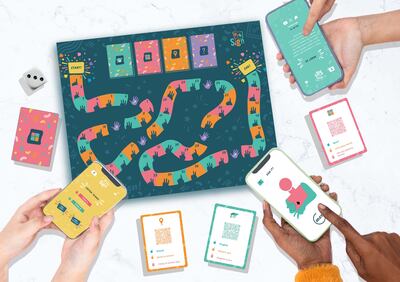
Sometimes, you need to have first-hand experience of the gap in the market, to look for ways to fill it. This is certainly the case for Mahek Mansukhlal, 26, a hearing-impaired graphic design student.
For her final project at SAE Institute Dubai, she teamed up with fellow student Hafsa Bilal to create a board game. But after some thought, the pair decided to make it personal to Mansukhlal.
“She enjoys charades and guessing games, ones that require miming and can include the non-hearing community, so we decided to do something on this,” explains Bilal. “But we wanted to also include an educational aspect by using American Sign Language.”
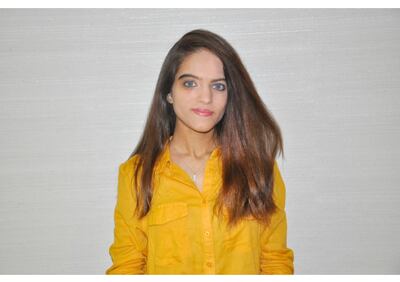
The result is HiSign, a four-player board game, with cards and a dice, which was also displayed at the Global Grad Show in October last year.
The game pits users into groups of two. Players roll the dice to move forward, landing on colour-coded spaces that require them to sign a word to their partners. If the partners correctly guess what the others are signing, they earn points and the team with the most points win. An app with QR codes for every word, which teaches users the sign language, is also included with HiSign.
While the duo specify that playing this game won’t make you a qualified ASL signer, it does give users knowledge on how to say certain important words including “hello”, “goodbye”, “interesting”, “boring”, “movies” an d “mall”. The next level of the game helps players use those words in sentences.
“It gives you the basics to communicate with someone who cannot hear,” Bilal puts it.
“We try to teach other people sign language but it can be complicated to remember, and repeating it is not satisfying. This game is an easy way to help people get a lot of practice making basic conversation. Eventually, they will be able to learn it and talk to deaf people,” Mansukhlal says, speaking via text message.
The game is still a prototype as the creators are fine-tuning the app and the QR codes. However, they do hope to make it commercial in the future.
“The main goal is also to help people communicate, have interactive moments with friends, whether they can hear or not. You are learning to become closer to someone and bridge the gap between the two communities,” says Bilal.
